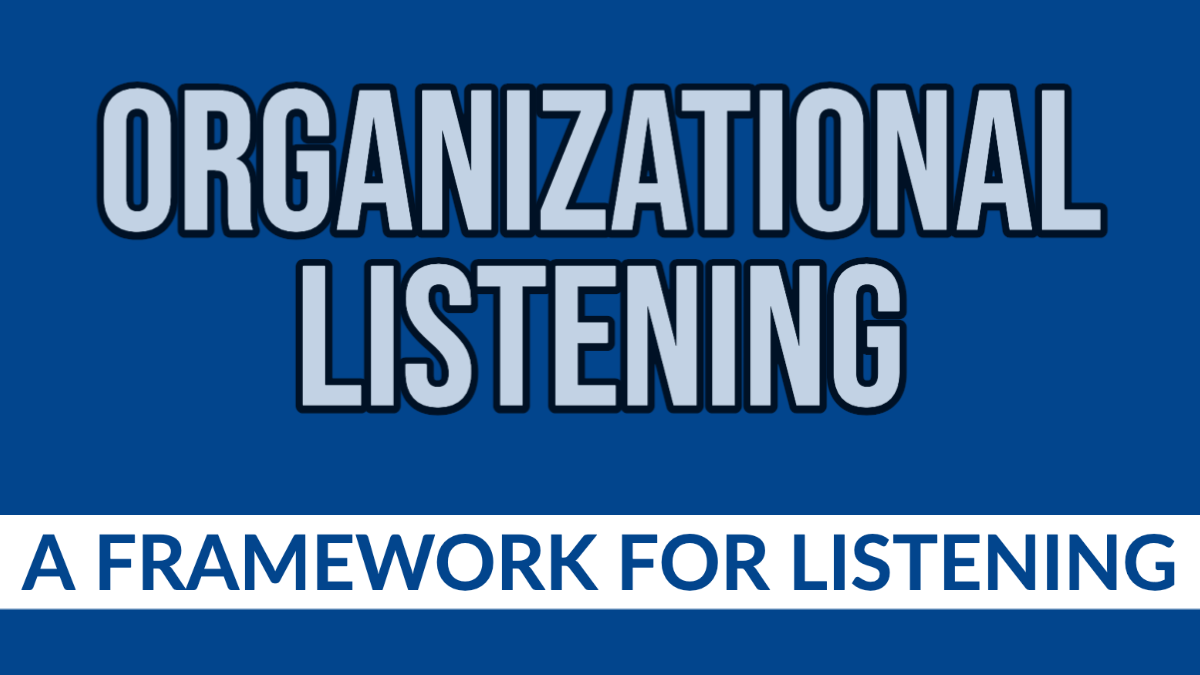Toward a framework for listening with consideration for intersectionality
May 2, 2022

By Katie R. Place, Page Center senior research fellow
In the wake of COVID-19, organizations have scrambled to listen to marginalized publics. Many have endured significantly higher job loss rates and a greater bearing of the burden of the crisis, due to longstanding racism, income inequality, and reduced economic mobility.
Complicating this, organizations have historically engaged in an 80:20 ratio of speaking versus listening, where listening is selectively done to promote marketing needs, provide competitive data, or identify methods to sell products. With this speaking-centered approach, organizations ignore the needs of underrepresented publics who have a right to be heard.
Bridging organizations and publics with listening…
Listening with consideration for intersectionality can potentially bridge organizations and publics to address inequality. Intersectionality holds that power relations affect the interplay and shaping of social categories – such as age, race, class, gender, sexuality, ability, and ethnicity – across individual and societal existence. Intersectional listening may foster respectful dialogue, attending to the ways that power and inequality manifest differently for all organizational publics.
As part of a larger study on organizational listening, my study highlights insights from my in-depth interviews with 38 U.S. public relations professionals in nonprofit and governmental industries, particularly those who frequently engage diverse publics occupying multiple, borderland spaces amidst gaps and contestations of dominant narratives surrounding race, gender, sexuality, and nationality.
The guiding question of the study: How do public relations professionals embody listening with consideration for intersectionality?
Four key findings: The 38 professionals I interviewed described how they listened with consideration for intersectionality via personal reflexivity, interpersonal sensitivity, organizational programs and initiatives, community and coalitional collaboration.
• Personal reflexivity
Participants expressed listening with reflexivity of their own complex, intersecting identities and “borderland” experiences. They felt this helped them to listen with greater empathy, authenticity, and a heightened awareness for intersectional nuance to their organization’s publics.
• Interpersonal sensitivity
Participants explained how their listening with consideration for intersectionality embodied sensitivity that attended to individual positionality – often described as recognizing where each person is coming from. “Asking the right questions” was also imperative to interpersonal listening with consideration for intersectional
• Organizational Programs and Initiatives
Participants identified ways in which formal organizational programs, such as employee resource groups, councils, and special listening-based initiatives, facilitated listening with consideration for intersectionality. In turn, listening identified ways in which communication, policy, or programming could be more equitable and actionable. Participants also touted organizational initiatives to hire employees dedicated to listening to/for intersecting identities and inequities.
• Communities and Coalitions
Participants were cognizant of listening with consideration for intersectionality across communities and coalitions, with attention to disempowerment and oppression. A communications director for a civil liberties nonprofit explained, “Listening to each other in these coalitions sounds like, ‘Okay, here's what I learned from this part of it. Here's what we've learned from here. And here's how we can move forward in a way that's honoring both.’”
What does this mean for PR theory and practice?
Intersectional listening should occur at personal, interpersonal, organizational, and coalitional points of practice. In particular, we should consider:
• Coalitional is key
Findings complemented Crenshaw’s and Cole’s emphasis on political and coalitional attention to intersectionality. Participants described how organizations identified commonalities and utilized these to listen. They urged municipalities to better listen to those who are situated amidst conflicting political agendas. As public relations professionals and scholars, we should address how the industry can embody coalitional listening with respect for intersectionality. Coalitional intersectional listening among civic groups, places of worship, schools, and community centers may help those managing communications on behalf of their organizations to better understand publics who must continually split their political energies and understand publics in relation to hybrid and evolving cultural, political, or group consciousnesses.
• Be reflexive
The study underscores the reflexive work that we must do to address assumptions, biases, or lived experiences in preparation for and during listening with consideration for intersectionality. We can start by asking questions like “What do I recognize, and not recognize, because of the positions I occupy?”
• Be mindful of power
Public relations professionals represent a tremendous amount of power and gatekeeping. Industry pros must listen to both themselves and others, include multiple perspectives, and acknowledge that their own and their organizational publics’ identities are shifting, co-constructed, and embedded within socio-economic, cultural, and political contexts. In turn, the industry may better work to dismantle and eradicate forms of social, economic, and political inequality.
Thank you to the Arthur W. Page Center for their generous support of this research. Looking for the full findings and recommendations?Full published article is available for download via Journal of Public Relations Research: https://www.tandfonline.com/doi/full/10.1080/1062726X.2022.2057502
Katie R. Place is an associate professor of strategic communication at Quinnipiac University.

